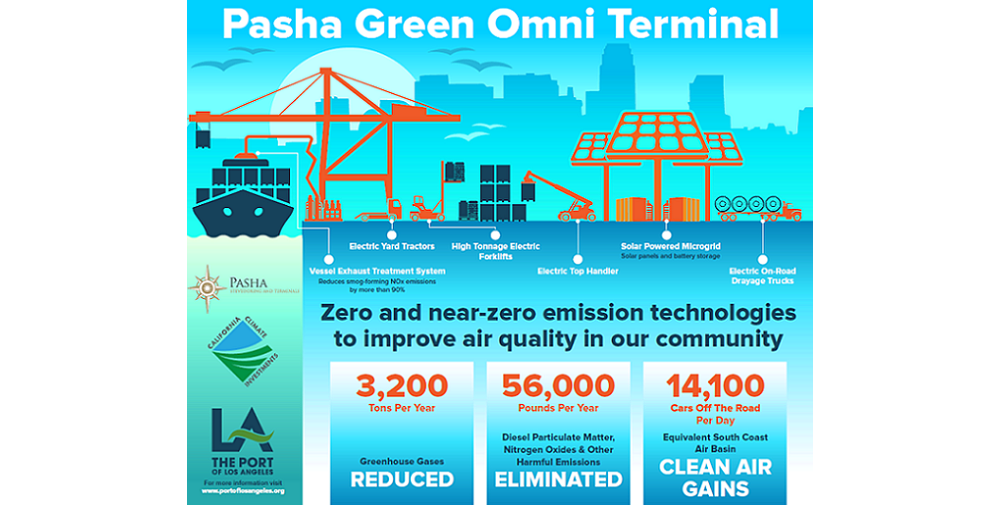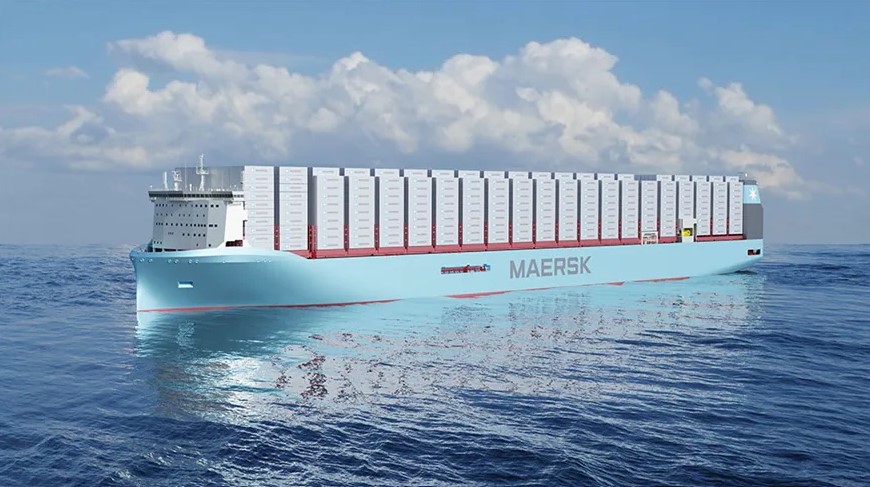The Port of Los Angeles and Pasha Stevedoring and Terminals L.P. are launching a full-scale, real-time demonstration of zero and near-zero emission technologies at a working marine terminal. At full build, Pasha will be the world’s first marine terminal able to generate all of its energy needs from renewable sources.
In addition to integrating zero-emission vehicles and cargo-handling equipment into the full scope of terminal operations, the project’s goals are to reduce emissions at berth from non-regulated ships, accelerate the development of commercially viable zero and near-zero emission equipment and solutions.
The Green Omni Terminal Demonstration Project is funded in part by a $14.5 million grant from the California Air Resources Board (CARB) for reducing greenhouse gases and other pollutants. The total cost of the project is $26.6 million. In addition to serving as the demonstration site, Pasha has committed $11.4 million in cash and in-kind participation.
The comprehensive strategy is expected to reduce more than 3,200 tons per year of greenhouse gases and nearly 28 tons annually of diesel particulate matter, nitrogen oxides and other harmful emissions from operations at the nation’s busiest container port.
As part of the project, Pasha will integrate a fleet of new and retrofitted zero-emission electric vehicles and cargo-handling equipment into its terminal operations and demonstrate the latest generation of advanced technology for capturing ship emissions from vessels unable to plug into shore power at berth.
With the goal of making the Pasha terminal a more sustainable and resilient facility that can operate independently off the grid in the event of a power loss, the project also features a microgrid that includes solar generation, battery storage and an energy management system to maximize usage. The 40-acre terminal handles general, project and heavy-lift cargoes of all shapes and sizes, including break bulk commodities such as steel and containerised cargo, making it the ideal laboratory for developing zero-emission solutions for many industries.
Project implementation will start in June with the final design and construction of the solar-powered microgrid. Components include a 1.03 megawatt photovoltaic rooftop array, a 2.6 megawatt-hour battery storage system, “bi-directional” charging equipment that can receive as well as supply power, and an energy management control system.
Los Angeles Mayor Eric Garcetti said: “With this partnership, we begin a new era for global shipping where we can eliminate emissions as we power our economy ahead. I look forward to seeing this innovative technology in action.”
Ship Efficiency Review News
To contact the reporter responsible for this article, please email editor@fathom-mi.com


































